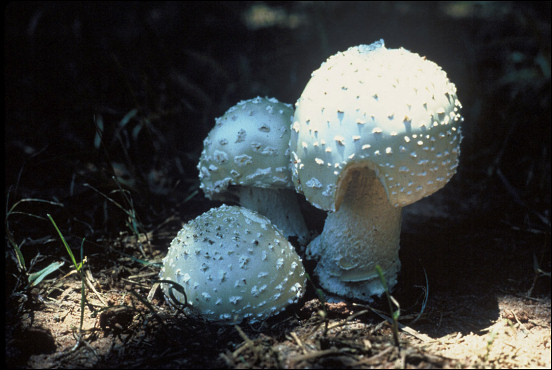

Almost everyone knows that plants manufacture their own food by using energy from light. A number of bacteria and the like do likewise. The food the rest of us take in traces back directly, or at least eventually, to those photosynthesizers. The processing, once we have the food, seems quite simple. Chew it up, swallow it, and digest it in the stomach and intestines. And that's pretty much the case for most animals, except many critters skip the chewing part. The process is so ingrained that we sometimes forget that a major group of organisms go about it very differently.
In the fungi, digestion takes on a whole other meaning. Rather than
fooling around with taking in chunks of food and breaking them down in a digestive
system, they do their digesting outside of the body. Getting up close and personal with
the food source, they merely secrete digestive enzymes to the outside of the body and
absorb the product. I'm sure it'll never catch on with us, though; after all,
the whole process seems kind of tasteless—literally!

Listen to the Audio (mp3 format) as recorded by KTEP, Public Radio for the Southwest.
Contributor: Arthur H. Harris, Laboratory for Environmental Biology, Centennial Museum, University of Texas at El Paso.
Desert Diary is a joint production of the Centennial Museum and KTEP National Public Radio at the University of Texas at El Paso.

A mushroom. The portions pictured are the reproductive bodies; the feeding parts
of the fungus are underground. Photograph by Don Pfitzer, courtesy of the U.S. Fish and
Wildlife Service. ![]()